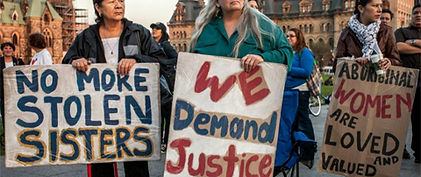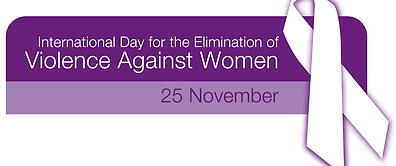World
Issues 120
Violence Against Women

The Problem
We live in a world today where some places oppressed with strict religions and cultures that demean women. Each year, millions of women and girls are victims of sexual assault, rape, domestic violence, and other horrible crimes. The numbers have decreased from previous years; however, the fact that there are still sexist acts remains to be the biggest problem. Last year, school girls from Nairobi, Kenya, were kidnapped by Nigeria’s terrorist organization Boko Haram, and many are missing to this day. The different types of violence against women include: sexual violence, violence and HIV/AIDS, genital mutilation, dowry murder, trafficking, violence during pregnancy, and discrimination.

Canadian Perspective
Violence against women in Canada remains a significant problem. Canada is one of few countries who have made efforts in order to protect the rights of women, however, there is more work to do. The actual incidence of violent acts against women and girls is estimated to be much higher than official police reported statistics suggest, as a large percentage of this violence goes unreported. Police-reported data show just over 173,600 women aged 15 and older were the victims of violent crime in 2011, a rate of 1,207 victims for every 100,000 women in the Canadian provinces. The rate of police-reported violent crime against women is higher in the territories than elsewhere in Canada. In 2011, the rate in the Yukon was four times higher than the national average, the rate in the Northwest Territories was nine times higher and the rate in Nunavut was nearly 13 times higher population. This is slightly higher than the rate of violent crime against men. Provincially, the prevalence of violence against women generally reflects regional variations in overall violent crime. According to police-reported data, Saskatchewan and Manitoba consistently record the highest police-reported rates of violence against women, and in 2011 recorded about double the national rate. In contrast, Ontario and Quebec have the lowest rates in the country.

The Solution
The best possible solution is to educate those who believe the standards that were established before the women’s rights movement. When people understand that women are the exact same as men, there will be no more sexism; however, it is not all that simple. People without the correct mindset will continue to discriminate based on gender, and their behaviors will influence younger children and peers to do the same. With education and reaching out to people with the wrong mindset, we can end violence against women in the workplace, as well as in developed, developing, and third world countries. Also, if some countries enforce and implement laws that protect the rights of women, there will be justice served to these women, and crimes will go unnoticed.

Reflection/Reaction
We believe that this is the biggest problem that needs to be addressed worldwide, because this is a major violation to human rights. People are always so keen on promote humans rights, however many people still recognize males to be superior to females. This mindset and opinion needs to be abolished in order to stop violence against women, and crimes against women. Nevertheless, there are still violence against men. We must continue to live in a world where we are all equals in value, and enforce lawful punishments to those who display their opinion by committing crimes as gender being the primary motivation. When people understand through education that women are no different men despite some biological features, there will be no bigotry and gender discriminations. Also, we think that the same measures will be able to abolish all types of discriminations such as race and religion.
http://www.un.org/en/globalissues/briefingpapers/endviol/index.shtml
http://www.swc-cfc.gc.ca/rc-cr/pub/violence-canada-eng.pdf
http://notenoughgood.com/wp-content/uploads/2013/07/QWuXtyBwZfUOZCu-556x313-noPad.jpg
http://trendingdig.com/beta-wordpress/wp-content/uploads/2013/11/violence-against-women1.png
http://www.amnesty.ca/sites/default/files/indigenous-stolen-sisters.jpg